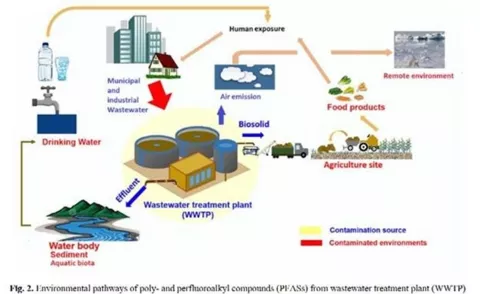The Sierra Club Wastewater Residuals Team is charged with protecting public health and the environment from the harm caused by sewage wastes. These wastes - the solids - "biosolids" - and the liquids - "effluent" - contain unregulated and dangerous chemicals that contaminate soils, waters and food.
Our leaders are volunteers from around the United States: Chair- Darlene Schanfald - Washington Chapter; Edward Kenney - Washington Chapter; Nancy Muse - Alabama Chapter; Nancy Stevens - Florida Chapter; Doris Cellarius, Oregon Chapter.
We share information to educate and empower citizens, especially those in communities where these wastes are applied. We advocate for stronger state and federal regulations by working directly with activists.
The PFAS Subteam of the Toxics Team also works on sewage waste issues: Check out their national Webpage:
https://www.sierraclub.org/grassroots-network/pfas/pfas-biosolids-creating-hazards-farms-and-gardens
Their Biosolids Poster is available here pfas.tofarms.poster.adk_.06.07.24.pdf
1.27 MB
Major Sewage Wastes Problems
Typical sewage treatment plants produce toxic sludge that, when spread on farms, fields, forests, and gardens can seriously impact human health, livestock, food crops, forage, water, and soil. Some states have adopted regulations to try to correct this but the federal government does little. EPA actually promotes these dangerous practices. When ocean dumping of sewage was banned under the Clean Water Act over 30 years ago, the EPA began promoting the land application of sewage wastes. They are often given away free as "beneficial" soil amendments to farmers, landscapers and homeowners without disclosure of all of the harmful contaminants they contain. Millions of tons have now been spread on agricultural and forest lands. Toxic PFAS chemicals in the biosolids have contaminated crops and animals.
The claim that sewage is "treated" in a treatment plant does not mean the waste becomes "clean" or "safe". These plants can receive thousands of contaminants a day - mixtures of toxic chemicals such as PFAS, dioxins, flame retardants, drug-resistant pathogens, pharmaceuticals, toxic metals and microplastics. The plant separates sewage solids from the liquid waste stream. Though the solids are placed in digesters where microbes feed on some contaminants, few are destroyed by this "treatment". Some contaminants actually transform into more toxic forms.

Solid sewage wastes and liquid effluent contain similar contaminants. Effluent is released into rivers or groundwater or applied to farms, parks, or forests where it can seep into surface and ground water - waters often used as drinking water sources.
